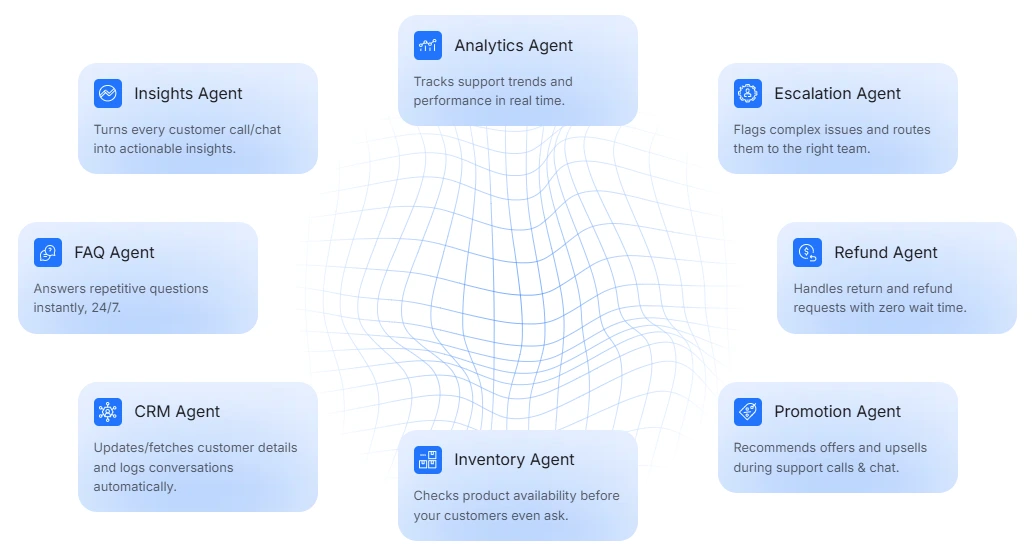Why Peak Seasons Stretch Customer Service
Every brand grows during festive periods, but growth brings a heavy load. More orders mean more tracking queries. More returns mean more refund requests. More shipments create more delivery checks.
And according to Typewise’s Holiday Support Surge Report, customer service volume jumps 22% as the holiday shopping season begins.
These spikes create chaos: high volume plus stretched human capacity means many requests wait longer, agents rush responses, and quality becomes inconsistent – right when customers expect speed and clarity.
That pressure turns the holiday rush from a growth opportunity into a possible pain point, unless support systems evolve to handle the surge.
Agentic AI steps in here with a simple promise – handle high-volume, repeatable tasks with speed and precision, so your human team focuses on conversations that need judgment or empathy.





 18 mins
18 mins











 Talk to Our
Consultants
Talk to Our
Consultants Chat with
Our Experts
Chat with
Our Experts Write us
an Email
Write us
an Email





